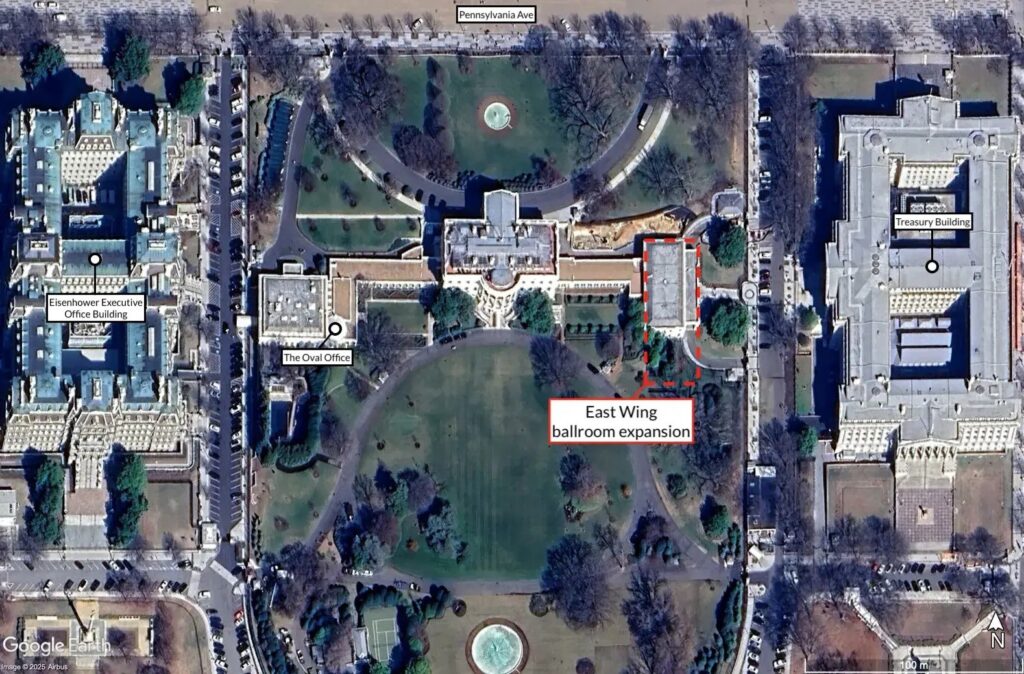Michael Burgess takes 26th Congressional District with 60% of vote.
Michael Burgess (R) bests opponent Carol Lannuzzi (D) in race for U.S. House 26th Congressional District.
Highlights of Burgess’ record here.
Denton County, TX – One race often overlooked is that of the U.S. House of Representatives 26th Congressional District, which includes Trophy Club, TX.

Michael C. Burgess (R) incumbent, won against Carol lannuzzi (D) and Mark Boler (L) in the November 3 election. Burgess received 60.6% of the vote to Lannuzzi’s 37.2%. Bolner came in with just 2.1%.
BallotPedia reports that Burgess is an average Republican member of Congress, meaning he will vote with the Republican Party on the majority of bills. For information on Burgess’ key votes, please click here.
Some highlights from Burgess’ education and professional career:
- 2003-present: U.S. Representative from Texas’ 26th Congressional District
- 2000: Graduated from the University of Texas, Dallas, with an M.S.
- 1977: Graduated from the University of Texas Medical School with an M.D.
- 1976: Graduated from North Texas State University with an M.S.
- 1972: Graduated from North Texas State University with a B.S.
Burgess has been assigned to the Committee on Energy and Commerce as well as the Committee on Rules.
Burgess voted against terminating the border wall emergency declaration as well as against re-imposing net neutrality rules. Both of these bills passed by the Democratic House in 2019.

Fate, TX
Developers, Builders, and Political Insiders Fuel “Vote Yes for Rockwall ISD” PAC

Rockwall, TX – When money talks, it doesn’t whisper — and in Rockwall, it’s shouting from billboards, mailers, and TV ads. Behind the polished “Vote Yes for Rockwall ISD” campaign urging residents to support the district’s VATRE (Voter-Approved Tax Rate Election) lies a familiar cast of Texas developers, contractors, and political insiders — all with deep pockets and deeper interests in keeping the district spending big.
While the PAC’s glossy flyers and heartfelt slogans suggest it’s a grassroots movement of teachers and parents “standing up for students,” the campaign finance records tell a much different story. In reality, the PAC was created, funded, and operated by people who stand to gain financially from Rockwall ISD’s continued expansion.
A PAC Built by Developers, For Developers
The Vote Yes for Rockwall ISD PAC was born on August 19, 2025. That same day, it received its first $10,000 — seed money courtesy of Meredith and Ryan Joyce, owners of a land development consulting firm that works with both commercial and residential projects across Texas.
It was an auspicious start — and a revealing one. The Joyces’ business depends on district growth: more schools, more infrastructure, more construction. In short, higher taxes mean higher contracts.
A few weeks later, the second $10,000 came rolling in from Terra Manna, LLC, a real estate development and land management company led by Bobby Harrell and Bret Pedigo. Terra Manna specializes in large-scale residential projects — the very sort of developments that flood school districts with new students and new tax demands.
Then came another $10,000 from Northstar Builders Group, a firm specializing in — of all things — school construction and development. The irony practically writes itself.
If the VATRE passes, Rockwall ISD keeps spending, schools keep expanding, and developers keep building. It’s a self-perpetuating cycle of “growth” — for them.
The Builders’ Ball: Who Really Funds “Vote Yes”?
The PAC’s donor list reads less like a community support roster and more like a who’s who of Texas construction and development.
At the top tier:
- Joeris General Contractors, LLC – $5,000
- Z Constructors Nationwide – $5,000
- Matt Zahm (Z Constructors) – $5,000 (personally)
- RPRE, LLC – $3,500 (real estate brokerage and development firm)
These are not concerned citizens hoping to keep classrooms funded — these are professionals whose livelihoods are directly tied to district spending and capital projects.
Add to that a lineup of $2,500 donors, including:
- Chris Harp Construction
- Satterfield & Pontikes Construction, Inc.
- Glenn Partners (Architectural Firm)
- Billy & Julie Burton (private)
Then there’s the $2,273 in-kind donation from State Representative Justin Holland and his wife, Neely, for what they listed as “hats.”
$2,273 worth of hats? That’s either a new fashion trend in political branding — or a convenient way to funnel campaign merchandise under the radar. Holland, a familiar name in local politics, has long been an ally of the developer class, and his support here fits neatly into the pattern.
Other mid-level donors include Jason Volk Consulting, Noelle Fontes, and Brian Berry at $2,000 apiece.
At the $1,500 mark, the donor pool widens to include Elite Landscaping, PCI Construction, Skorburg Company, and Hanby Insurance, LLC — all companies that directly benefit from ongoing construction and development contracts in fast-growing communities like Rockwall.
Follow the Money — and the Math
In total, the PAC has reported $96,068 in contributions. But here’s the number that matters: $89,273 — or 93% — came from developers, builders, and real estate professionals.
The PAC’s promotional materials claim they’re “standing with teachers.” Yet only about 8% of all donations — under $1,000 each — came from teachers or district employees.
In other words, the people being used as the public face of this campaign are the least financially involved in it.
The illusion of grassroots support masks what is, in fact, a highly coordinated and well-funded lobbying effort — one aimed at convincing taxpayers to fund the very projects that enrich the PAC’s donors.
Big Money, Bigger Ads
The spending patterns are just as revealing. Since August, Vote Yes for Rockwall ISD has spent more than $27,000 on flyers and mailers, $9,000 on billboards, and even $3,000 on television ads — a heavy push for a local tax election.
They’ve also purchased $1,250 in ad space in Blue Ribbon News, the same publication that ran a “news article” touting the VATRE’s supposed benefits. The placement wasn’t coincidental — it was strategic.
And then there’s the expense that raised more than a few eyebrows: a $435.40 reimbursement to Meredith Joyce for “Car Polish Supplies.”
Car polish. From the same person who donated $10,000 in seed money.
One has to wonder what, exactly, was being polished — the campaign’s image, or something a bit shinier?
The Real Stakeholders: Not the Kids, Not the Teachers
Let’s be honest: when developers and construction firms pour nearly six figures into a local tax election, it’s not out of civic virtue or classroom compassion. It’s because they see a return on investment.
Every new bond, every tax hike, every “yes” vote translates into another round of district-funded construction — and another series of lucrative contracts.
Meanwhile, teachers — the supposed heart of the movement — are relegated to bit players. Their donations are symbolic at best, swallowed up in a sea of developer dollars.
Even worse, the campaign’s slick messaging exploits their image. Smiling teachers in front of whiteboards, holding “Support Our Schools” signs, while the fine print reads like a blueprint for cronyism.
Political Influence Runs Deep
The fingerprints of political insiders like Rep. Justin Holland only reinforce the perception that this isn’t about education — it’s about influence.
By lending his name (and hats) to the campaign, Holland helps cloak the PAC’s true motives under a veneer of community support. But his connections to the donor class are no secret.
When state legislators, developers, and contractors align to push a local tax increase, taxpayers should pause and ask: Who benefits most from this vote?
Spoiler: it isn’t the students or the teachers.
Manufactured Consent
The “Vote Yes for Rockwall ISD” campaign is a textbook case of manufactured consent. Using big money, polished marketing, and local political connections, the PAC is attempting to sway residents into supporting a measure that serves private interests far more than public good.
It’s the same formula seen across Texas — from bond packages to tax rate elections — where growth and progress are invoked as cover for sweetheart deals and endless construction booms.
Rockwall residents deserve to know who’s funding the message before they cast their ballots.
Because when nearly all the money pushing a tax increase comes from developers, builders, and their political allies, it’s no longer a campaign — it’s an investment.
And like any investment, the people writing the checks expect a return.
Bottom Line:
The Vote Yes for Rockwall ISD PAC isn’t a movement of parents or teachers. It’s a development-driven marketing operation, built to protect the flow of taxpayer money into the hands of builders, consultants, and political allies.
Rockwall voters should take note: when the people who build schools are the loudest voices demanding higher taxes “for the children,” it’s worth asking whether their real concern is education — or their next contract.
Featured
National Trust Tries to Bully the President

The National Trust for Historic Preservation (NTHP), a private 501(c)(3) nonprofit, sent a sharply worded “demand” letter to the National Park Service (NPS) on October 21, aiming to halt President Trump’s bold plan to demolish the White House’s East Wing for a grand 90,000-square-foot ballroom addition.
The move, meant to modernize the People’s House for state dinners and global summits, has preservationists clutching their blueprints in horror. But this isn’t about saving history—it’s about a private club flexing muscle it doesn’t have, trying to strong-arm an Executive Branch that answers only to the Constitution and the American people.

Let’s get one thing straight: The NPS, which oversees the White House as a national historic site, isn’t a free-floating bureaucracy taking orders from self-appointed guardians of granite. It’s a cog in the Department of the Interior, a cabinet-level agency nestled firmly within the Executive Branch. Article II of the Constitution vests the President with singular authority to administer the government, meaning the NPS takes its marching orders from 1600 Pennsylvania Avenue, not a donor-funded NGO with a fancy letterhead. The President doesn’t need a permission slip from anyone—least of all a group whose congressional charter from 1949 (Title 54 U.S.C.) grants them zero enforcement power, only a soapbox to “facilitate public participation” in preservation debates.
The White House, battered by time and tight quarters, needs this upgrade. The East Wing, a 1940s wartime add-on, wasn’t built for 21st-century diplomacy. Trump’s team, riding a fresh mandate from 74 million voters, broke ground on October 20 to clear the way for a ballroom that can host world leaders without elbowing ambassadors into the Rose Garden. It’s a practical fix, not a wrecking ball to history. Yet the NTHP, led by President and CEO Carol Quillen, fired off their letter to the NPS, the National Capital Planning Commission (NCPC), and the Commission of Fine Arts, demanding a “pause” until the project undergoes “legally required public review processes.” Their fear? The new wing might “overwhelm” the White House’s aesthetic balance, as if a President’s vision for his own residence needs a focus group’s approval.

This is where the NTHP’s overreach gets laughable. Their charter, signed by Harry Truman, makes them a nonprofit cheerleader for preservation, not a coequal branch of government. They’re a membership organization—think country club for history buffs, bankrolled by corporate sponsors and tax-deductible donations. They partner with the NPS on grants and advocacy, sure, but that’s like a booster club claiming veto power over the coach’s playbook.
The NPS, managing $62 million in Historic Preservation Fund grants for FY25, answers to Congress’s purse and the President’s pen, not Quillen’s pleas. The NCPC and CFA? They’re advisory bodies, not czars. Their input on D.C. federal projects, born from post-WWII urban planning laws, carries weight only as far as the President allows. For the White House itself? That’s executive turf, exempt from the zoning red tape that snarls lesser projects.
Quillen’s letter drips with sanctimonious concern, urging “transparency and broad input from the public.” Translation: Let us, the enlightened few, gatekeep the nation’s heritage. This isn’t advocacy—it’s audacity. The NTHP’s claim to speak for “the American people’s investment” in the White House ignores the 74 million who voted for action, not paralysis. Their cozy ties to the NPS—shared programs, joint field offices—make this less a principled stand than a power play by insiders who think they own the narrative on “historic.” The American Institute of Architects piled on in August, fretting about “scale and balance,” but their opinions, like the NTHP’s, are just that—opinions, not edicts.
Conservatives know this game. It’s the same soft tyranny we’ve seen in Texas, where unelected boards and NGOs try to smother progress with red tape. From Austin’s zoning wars to the Alamo’s restoration fights, we’ve learned that preservation without purpose is just stagnation. The White House isn’t a museum diorama; it’s a living seat of power, meant to project American strength. Trump’s ballroom isn’t defacing history—it’s enabling it to serve the future.
White House officials, unmoved by the posturing, signaled yesterday that demolition continues. “The scope and size of the project has always been subject to vary as the process developed,” a spokesperson said, noting plans would hit the NCPC “at the appropriate time.” In other words: We’re building, and your memo’s been filed under ‘irrelevant.’ (my words) That’s the Executive Branch at work—accountable to the voters, not the vetoes of a nonprofit elite.
This dust-up exposes a deeper rot: the creeping assumption that private groups can check the President’s constitutional power. The NTHP’s letter isn’t just a misstep; it’s a microcosm of the swamp’s obsession with control, where every decision must pass through layers of unelected gatekeepers. Article II doesn’t bend to such nonsense. The President’s authority over his own residence, and the agencies that serve it, is as clear as the Constitution’s parchment.
In Texas, we’ve fought these battles before—against bureaucrats who’d rather embalm our past than let it breathe. The White House deserves the same fierce pragmatism. The NTHP’s demands are confetti in a constitutional storm—pretty, fleeting, and powerless against the will of a President elected to act. Let the jackhammers roar. America’s house is getting a long-overdue upgrade, and no amount of nonprofit noise can stop it.
Featured
New Pentagon Media Access Rules: Balancing Security and Scrutiny in a Military Stronghold

Arlington, VA – The Pentagon has rolled out updated rules for media access this week, effective October 15, 2025. Dubbed Pentagon Facility Alternative Credentials (PFACs), these guidelines replace previous protocols with a structured framework aimed at safeguarding a building that’s as much a nerve center for national defense as it is a hub for public information.
While dozens of journalists from major outlets like The New York Times, CNN, and even Fox News have dramatically turned in their badges in protest—vacating shared workspaces in a symbolic walkout—the changes deserve a measured nod of approval. After all, this isn’t the open-air spectacle of Congress, where elected officials thrive on unscripted drama. The Pentagon is a working military facility, teeming with classified operations and personnel whose daily tasks could tip the scales of global security. Prioritizing leak prevention over a reporter’s dash for an exclusive “scoop” from an undisclosed source isn’t just prudent—it’s essential.
The new rules, outlined in a May 2025 memo and refined through an October 6 update, stem from the Pentagon Force Protection Agency’s (PFPA) need to tighten physical and information controls amid rising threats. At their core, they require media members to complete a “Security Awareness Briefing” and sign an acknowledgment pledging compliance with Department of War (DoW) policies—no small ask, but one that underscores the gravity of the environment. Key provisions include:
- Visible Credentials and Escort Mandates: PFACs must be worn above the waist at all times (except during approved events like briefings), and unescorted access is limited to narrow zones, such as the first-floor food court between Corridors 1 and 10 or specific paths on upper floors (detailed in Appendices C and D). Elsewhere, public affairs escorts are required, ensuring journalists don’t inadvertently wander into sensitive areas.
- Information Safeguards: The briefing explicitly warns against unauthorized disclosure of Classified National Security Information (CNSI) or Controlled Unclassified Information (CUI), with potential revocation for violations under laws like 18 U.S.C. §§ 793 and 952. This isn’t a gag order on reporting—media can still publish anything they learn through proper channels—but it draws a firm line against soliciting or handling non-public materials that could endanger lives or operations.
- Filming and Recording Restrictions: Per 32 CFR 234.15, cameras and recorders are prohibited without at least one week’s advance approval from PFPA or the Assistant Secretary of Defense for Public Affairs. Exceptions abound for official press events, unilateral stand-ups in the Briefing Room, or DoD-monitored interviews, preserving the visual storytelling that defines modern coverage.
These measures aren’t born of paranoia; they’re a direct response to the Pentagon’s unique mandate. Unlike the Capitol, where transparency is baked into democratic oversight, the E-Ring houses strategists plotting responses to cyber threats, missile defenses, and covert ops. A leaked memo or ambushed official spilling beans mid-corridor isn’t just embarrassing—it’s a vector for adversaries. The rules affirm that access is a “privilege subject to the discretion of government officials,” not an unfettered right, aligning with longstanding regs like 32 CFR Part 234.
And crucially, they don’t shutter the doors to journalism: Reporters retain full entree to public briefings, podium announcements, and any declassified info shared via the Office of the Assistant Secretary of Defense for Public Affairs (OATSD(PA)). No story is off-limits; the only taboo is the ambush-style sourcing that turns a secure workspace into a free-for-all.
That said, the framework isn’t flawless, and here’s where reservations creep in:
These rules could inadvertently squeeze independent media, the scrappy underdogs who often deliver the most unvarnished takes on defense matters. Requirements like sponsorship through a U.S. public affairs office and proof of “minimum monthly” visits for renewals (initial three-month PFACs, then six-month probationary periods) favor entrenched outlets with deep pockets and dedicated Pentagon beats.
Freelancers or solo operators—think podcasters dissecting procurement scandals or bloggers tracking drone ethics—might struggle to secure that elusive sponsor or log the requisite face time without institutional backing. Add vague revocation triggers like “unprofessional conduct” or “soliciting non-public info,” and the chilling effect on diverse voices grows. As one defense trade press statement lamented, this risks sidelining “smaller publications specializing in military coverage” at a time when broad scrutiny is vital.
It’s a fair critique, echoed in the en masse badge surrenders: Over 30 outlets, from giants to niche players, opted out rather than ink the pledge, warning of eroded First Amendment ground. Yet even here, the Pentagon’s revisions show flexibility—issuance for existing PFACs extends through October 31, and parking perks like designated “PRESS” spots remain for compliant crews. During emergencies, from pandemics to active threats, access might tighten for all, but that’s workforce protection, not press persecution.
Ultimately, these rules fortify the Pentagon’s dual role: a fortress of secrets and a fountain of facts. By channeling media energy toward structured engagement—escorted interviews, approved footage, and robust briefings—they enhance, rather than hinder, accountable reporting. Independents deserve a carve-out to level the field, perhaps via streamlined sponsorship for verified freelancers. But in a world of hybrid warfare and info ops, national security can’t play second fiddle to the thrill of the scoop.
As the dust settles from this week’s exodus, let’s hope cooler heads prevail. But let us not forget that the press, who have set their own hair on fire over this issue, have reported 90% negative news coverage of the Trump administration and are, without any doubt, hostile to every action taken by this administration. So, a bit of perspective is in order.
** A copy of the entire rules and regulations can be found here:
Pipkins Reports is committed to fair, fact-based coverage of defense and national security. Views expressed are those of the author.





